
The transport certificate is exchanged between multiple stakeholders throughout the process, often leading to errors.
Research
Concept developement
UI & UX Design
Animation
This project was my bachelor’s thesis, completed during the winter semester of 2024/25 at the University of Applied Sciences - Schwäbisch Gmünd as part of the Interaction Design studies.
Patient transport refers to the transport of individuals who require medical care from one location to another. This can include transfers from a home to a medical center or between hospitals. Depending on the patient’s needs, transport is provided using regular vehicles or non-emergency ambulances.
The processing of patient transport in Germany relies on an inefficient and error-prone paper-based system. Incorrect or incomplete information often leads to delays or rejections by health insurers. Additionally, communication between medical practices, transport services, and health insurers is largely conducted via telephone, fax, or letter, making the entire process inefficient. The transport certificate, a key document in this process, is still issued in paper form and is a common source of errors.

The transport certificate is exchanged between multiple stakeholders throughout the process, often leading to errors.
We began by developing a comprehensive understanding of patient transport in Germany, including its processes and stakeholders. This involved analyzing roles, responsibilities, challenges, and potential improvements.
To achieve this, we conducted secondary research on the legal and systemic framework, as well as the technical tools used in patient transport. However, understanding stakeholder perspectives was essential. To gain deeper insights, we interviewed patients, transport services, medical assistants, aid organizations, health insurer and nursing home staff. This allowed us to better understand the tasks, needs, and challenges faced by those involved in the process.
After the research phase, we focused on analyzing the data to better understand the problem and users' needs, identifying key opportunity areas for improvement in the process. One major issue is the frequent errors on the transport certificate, which causes delays and additional work. The paper-based system further complicates the process, leading to transmission errors and lost documents.
These challenges place a burden on all parties involved. Medical practices must spend extra time handling corrections, while transport services face significant administrative challenges. Health insurer also struggle with manual paperwork. Patients, particularly those who rely on support, experience stress and may have to cover rejected costs themselves.
The identified fundamental issues
We aimed to design a solution that improves communication, coordination, and information exchange in patient transport, addressing the identified challenges. Our goal was to create a solution that seamlessly integrates into Germany's existing healthcare system, streamlining administrative processes, reducing errors, and boosting overall efficiency.
This is expected to lead to faster processing and an enhanced patient experience. To ensure accessibility for all users, we focused on providing alternatives for those, particularly older patients, who prefer familiar, non-digital options.
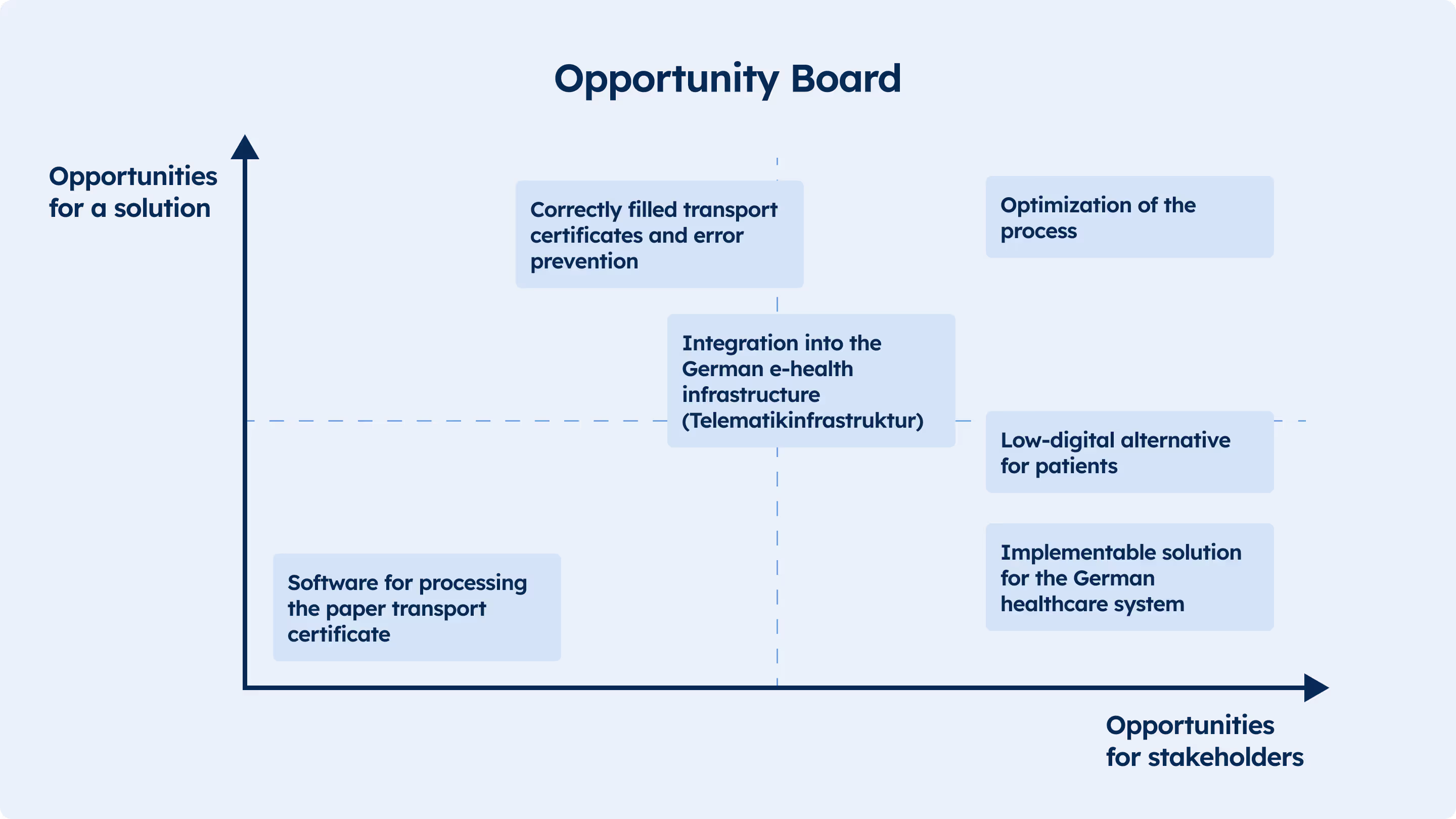
Through the sorting of opportunities, we were able to design a solution that truly improves the current process.
To achieve this, we conducted solo design sprints, each team member tackling a specific goal. This helped address the complexity of multiple challenges and stakeholders. We refined our ideas, tested a concept to remove patients from the active process, and, based on feedback, shifted toward a digital solution to enhance patient autonomy.
To ensure consistency and a coherent user experience, we developed a comprehensive design system tailored to our requirements. It serves as a foundation for presenting our concept.
A comprehensive design system serves as a foundation for our concept.
As a result, we developed the eTransport service, a digital system that improves ordering, approval, verification, and billing of patient transport. This creates a more efficient process. A key component is its secure storage and management of electronic transport certificates. This central database enables seamless digital data exchange.
The system is designed for medical practices, health insurers, transport services, and patients. In the long term, it aims to make the processing of patient transport more efficient, transparent and user-friendly.
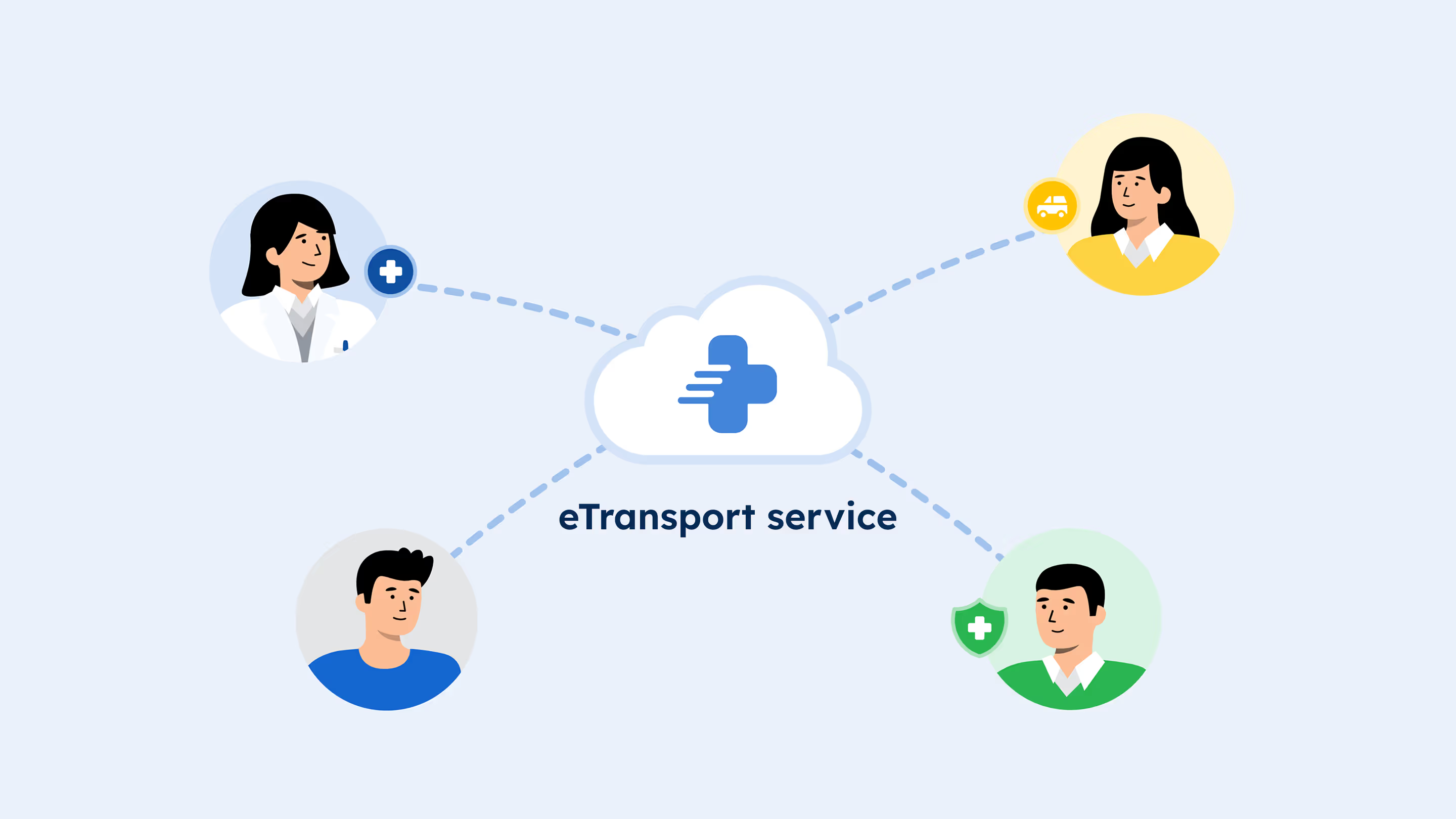
Connecting through a platform that streamlines patient transport with efficiency, transparency, and ease.
The mediTrans companion app offers patients an easy way to manage their patient transport. Through the app, they can access their electronic transport certificates, check the approval status, and book rides effortlessly. Additionally, the app provides notifications for upcoming rides and enables communication with transport providers.
For patients who are less digitally inclined, there is an option to receive a printed version of the eTransport certificate or use their insurance card for identification. To help patients familiarize themselves with the new process, an informational leaflet with explanations was created.
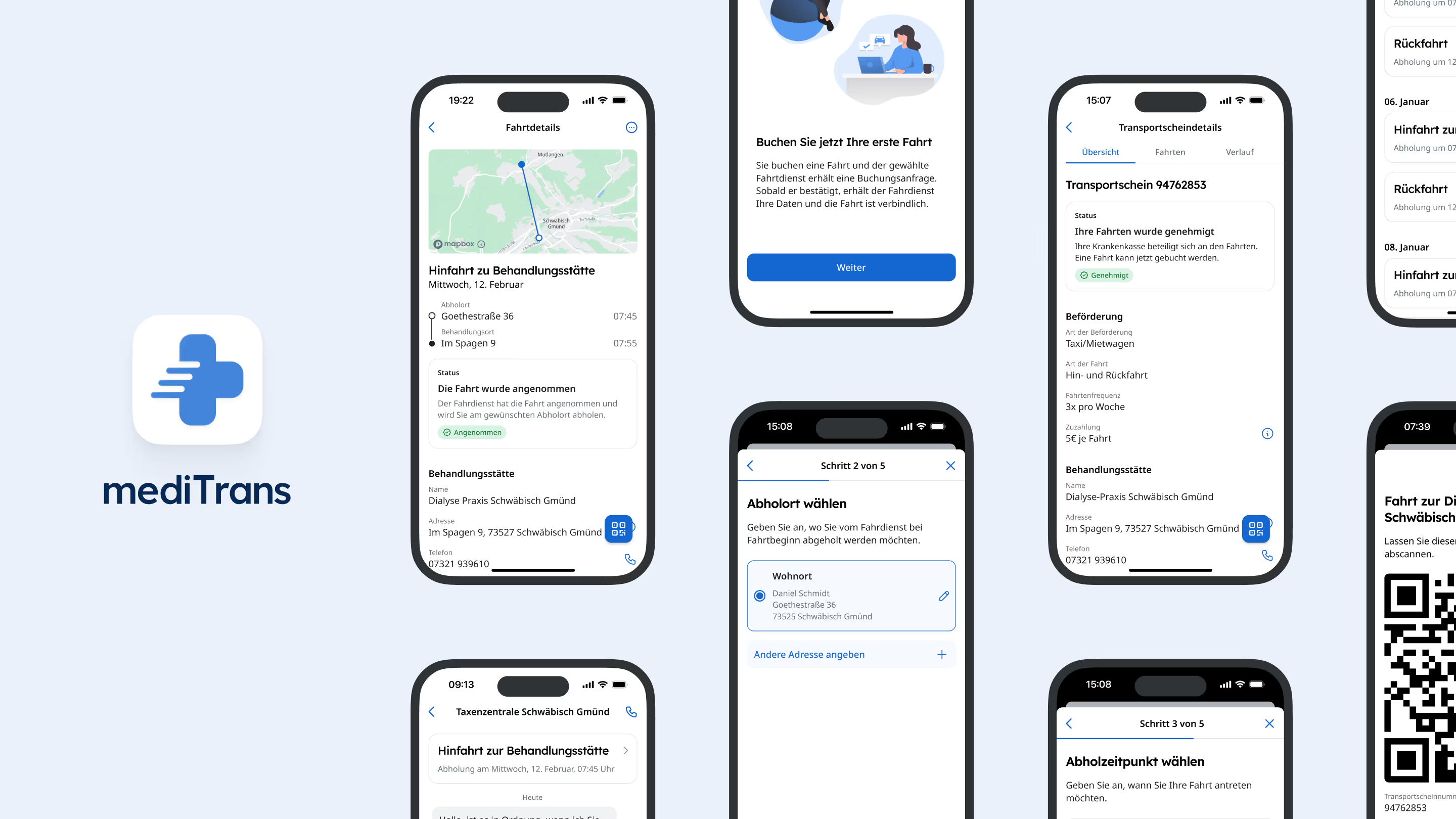
Patients can view their transport certificates and book rides via the app.
Watch the app screenflow videoDoctors can generate eTransport certificates directly within their existing medical practice software. Intelligent filling aids and automated checks streamline the process, enabling faster and more accurate completion. This minimizes errors, accelerates approvals, and reduces administrative workload.
With electronic transport certificates, patients no longer need to manually submit documents to their health insurer. Approvals are processed automatically, significantly simplifying the process for patients.
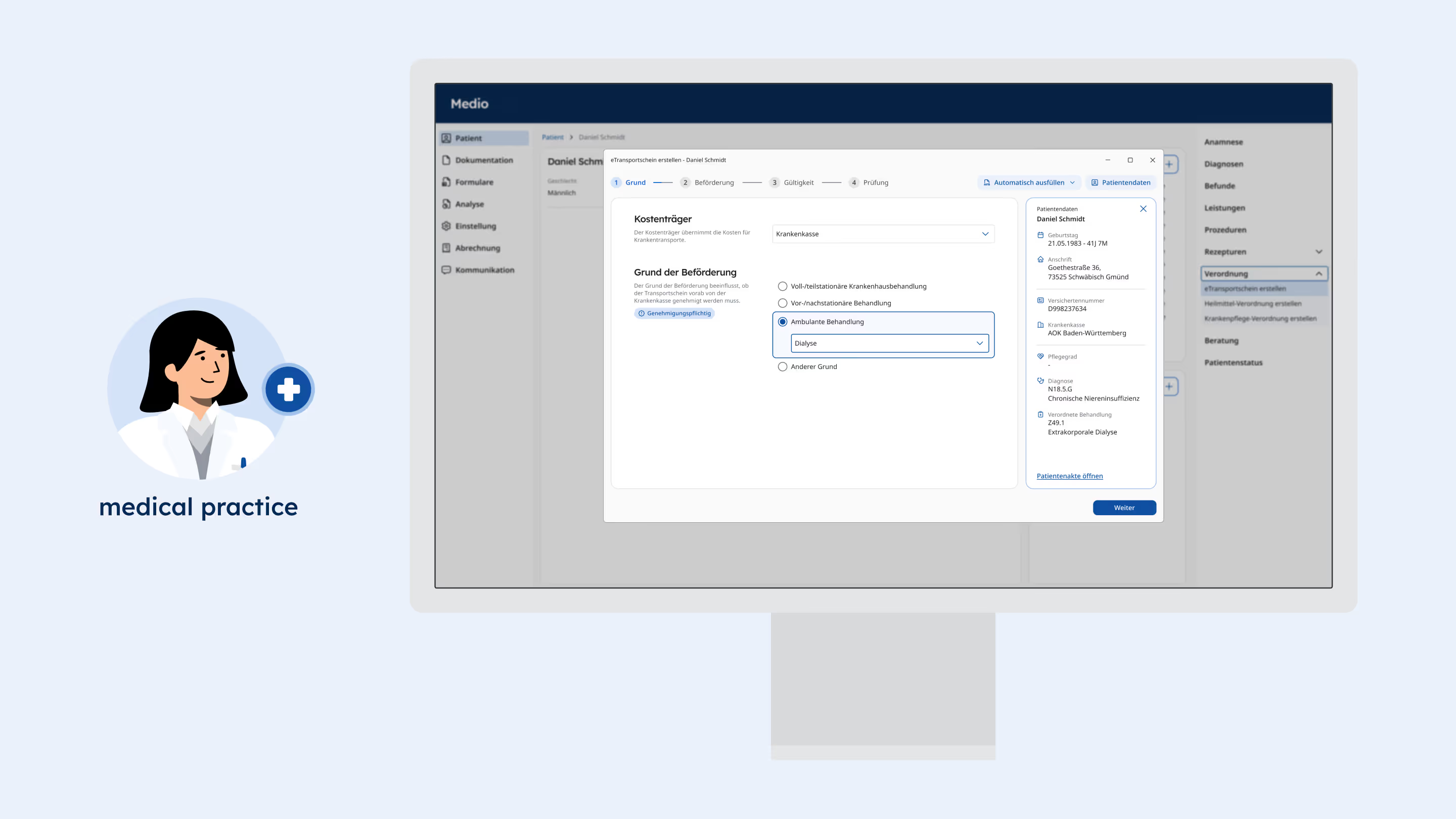
Doctors create and sign transport certificates electronically, which are stored in the eTransport service.
To support drivers during patient transport, they can access the eTransport certificate via app. Before starting the ride, drivers can retrieve certificates once patients present their insurance card or the QR code from a paper printout or the mediTrans app. This also serves as patient identification, enabling ride data to be electronically recorded and stored in the eTransport services database.
This streamlines the billing process, as only the billing details need to be added by the transport services to the certificate in the database. Health insurers can then access the complete dataset once the transport is completed and process the payment efficiently.
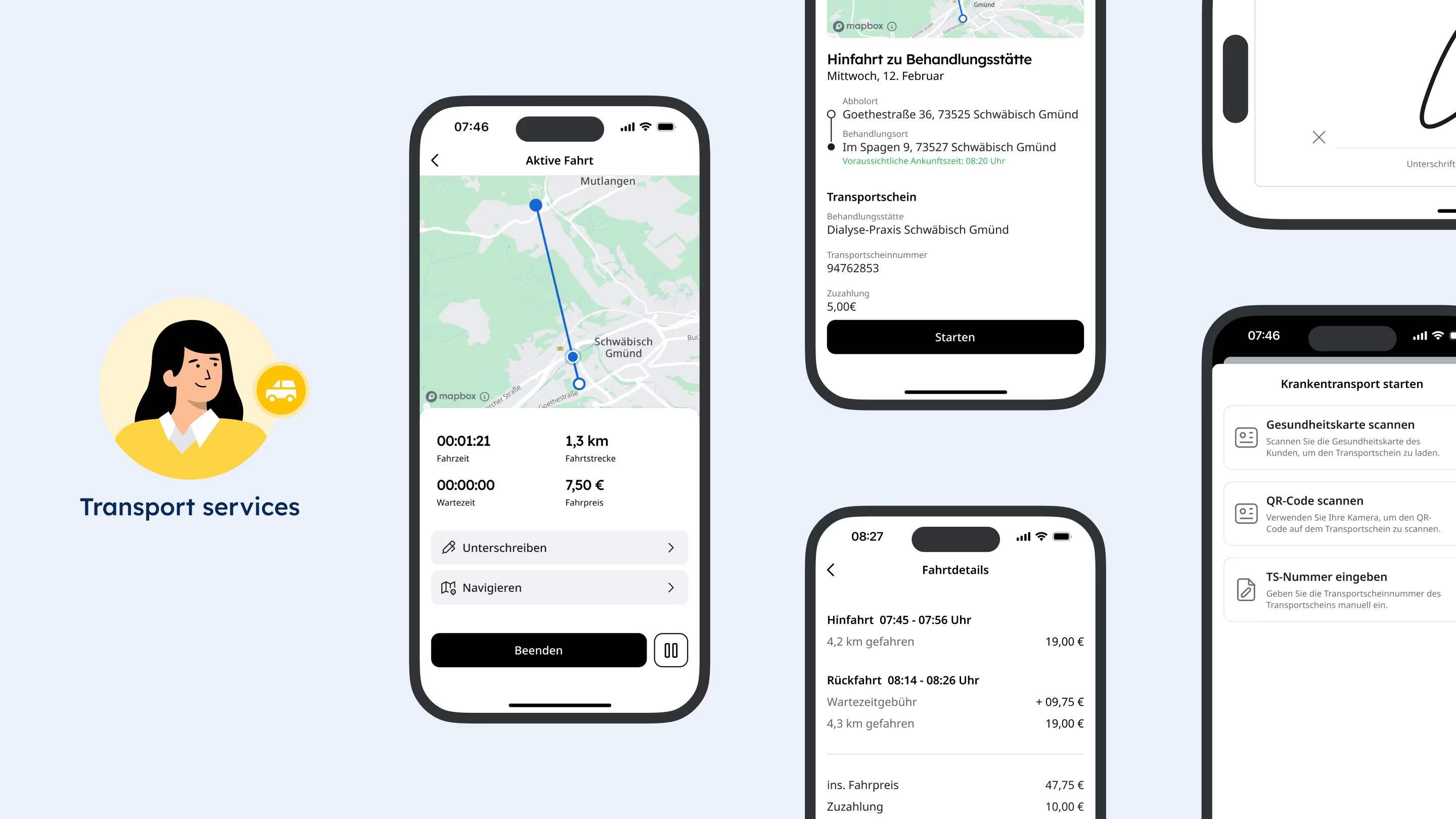
Drivers are guided through the administrative process of patient transport.
eTransport service - process demonstration video